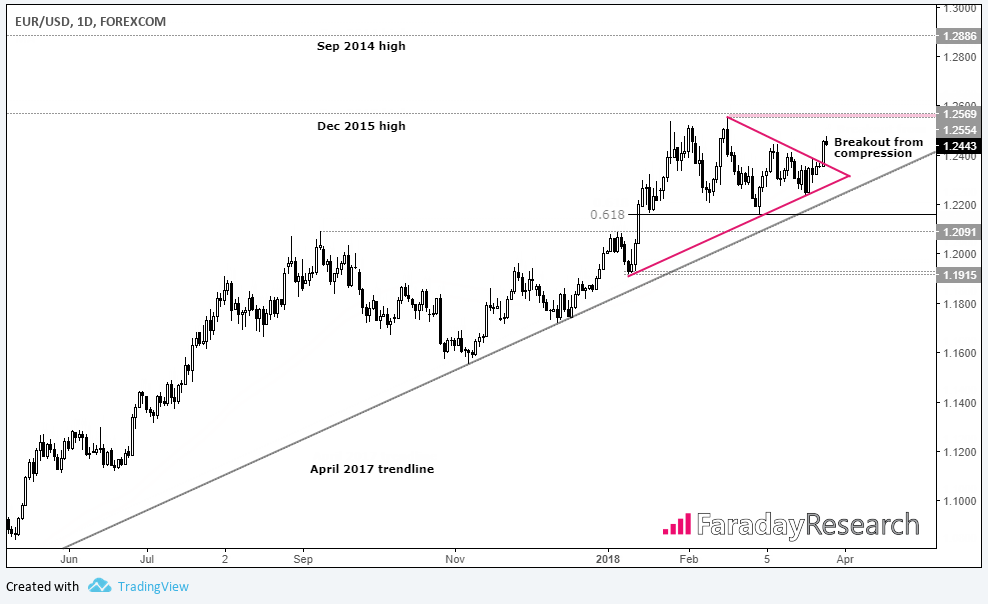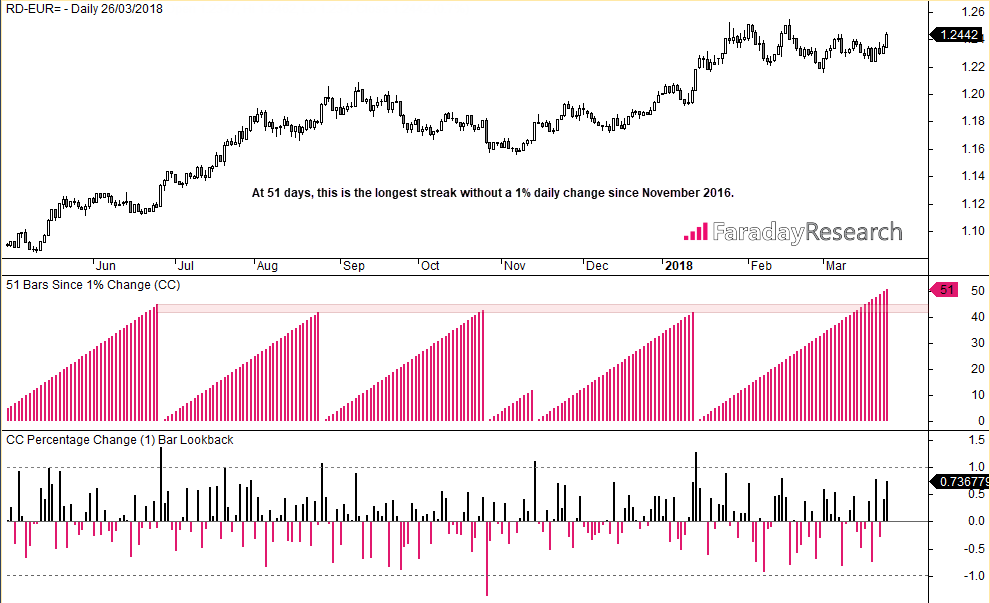After noting the US dollar index was showing signs of compression last week, we’ve been on the lookout for volatility to broadly hit the USD since. And with WTI testing highs, euro breaking out of compression and money flowing out of safe-haven currencies, we suspect the next phase of volatility is underway for markets.

Since Thursday’s post we have seen EUR/USD break out of a compression pattern, which was our favoured outcome as dominant momentum is clearly on side with the bull-camp. As range expansion closed decisively out of a compression pattern we think there’s a decent chance we have returned to the longer-term bullish trend.
Whilst the move could extend to the 2018 highs, we’d prefer to seek a low volatility pullback or see evidence of price compression before committing to a trade. If we do see the 2018 highs taken out a run towards 1.2886 may not be out of the question. However, before we become overly bullish we find it interesting to note that the pair has not seen a daily change of 1% or more in 51 days. And with the consensus presumably looking for new highs, perhaps the next large move may be down, not up.

Using data from 1997, at 51 consecutive days this is the longest streak <1% since November 2016. Throughout 2017 there was a cluster of ‘streaks’ between 42-45 days which itself is well above the historical average of 19.2 days. Furthermore, as the probability of a 51-day streak is just 0.74% it suggests the current run is becoming an outlier and the probability of daily change 1% or greater is increasing.
Naturally as we are bullish on EUR/USD we would prefer to see such an event occur after we have successfully entered the trade. But it also serves as food for thought as we head for the 2018 high, which could become a tempting area to book profits and cause such a notable reaction.
